 Delhi
Delhi5 Off-Road Biking Trails You Can't Afford to Miss
Despite all the allegations of pollution and poor air quality, Delhi actually boasts of quite a few vast reserve forests right in the middle of its urban settlements. They are generally well-maintained and lined with mud tracks that can be used for jogging as well as cycling. Here are a few you must check out for that offbeat excursion you've been hankering after!
1. Sanjay Van
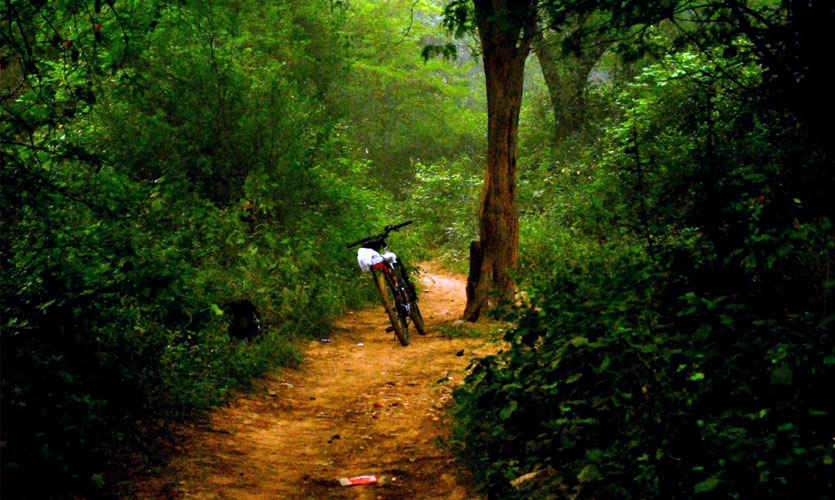
The Route
Sanjay Van can be entered from several directions. One entry is behind the Qutub Minar Complex or you can enter from Vasant Kunj side on the Aruna Asaf Ali Marg. Once you enter, you will be welcomed by a reasonably wide and well maintained mud track lined with thick forests on both sides and culverts and benches at regular distances. The central portion of Sanjay Van is the ancient fort of Lal Kot whilst the rest of the jungle has grown around it and the routes generally cover the area surrounding the citadel.
The Terrain
The terrain is the closest you will come to a 'trek' in the heart of Delhi. If you stick to the tracking route it is all plain and simple. But once you go off-track, you can climb up the elevations and then also roll down to lower depths at various parts of the jungle.
What Not To Miss
We suggest that you start from the Vasant Kunj side and explore all the trails in different directions. Keep the Lal Kot walls in mind while you hang around. For wildlife sightings, move stealthily and try not to alarm them by making too much noise. It is better to carry a pair of binoculars if you're interested in birds.
2. Rajokri Protected Forest
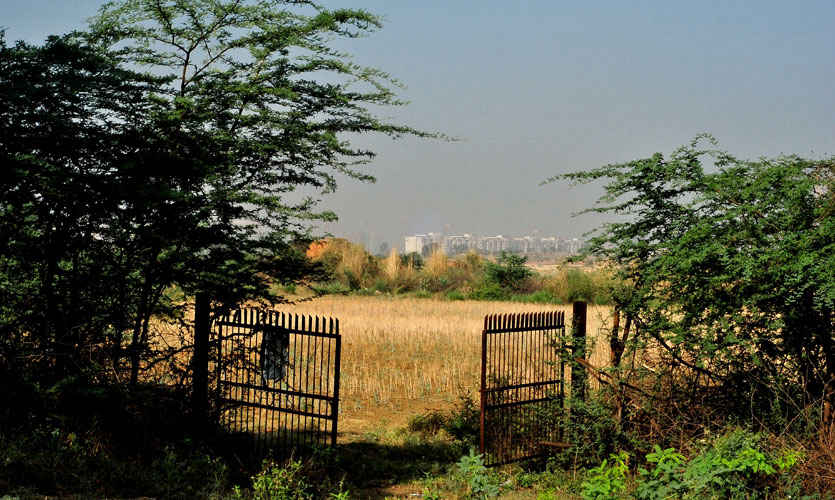
The Route
The Rajokri Protected Forest is the wilderness you see from the metro when you travel to curtain from Delhi. With luxurious farmhouses of the city’s rich & famous, the region covers an area between MG Road & NH 8, Vasant Kunj & Mahipalpur. For Delhiites, the easiest way is to enter it from Vasant Kunj. It can be reached easily from the Chattarpur Metro Station.
The Terrain
The ridges of Delhi are technically a part of the Aravalli range, the oldest mountain range of the subcontinent. That is why the vegetation inside the jungle is diverse and some of them have been planted to recreate the magic of Aravallis. So, as you ride along the track, you will see Indian gooseberry, amaltas, bahera, drumstick, ashoka and bael. The trees have been properly labelled, so if there are children in the troupe, it can be a good educational experience.
What Not To Miss
Encroachment and illegal constructions have made the jungle shrink to some extent. But still, it is a good area for bird watchers. Peacock, Red Wattled Lapwing, Red Rumped Swallow, Indian Grey Hornbill, White Throated Kingfisher, Indian Eagle Owl, Indian Bushlark and many other species can be easily spotted here.
3. Asola Wildlife Sanctuary
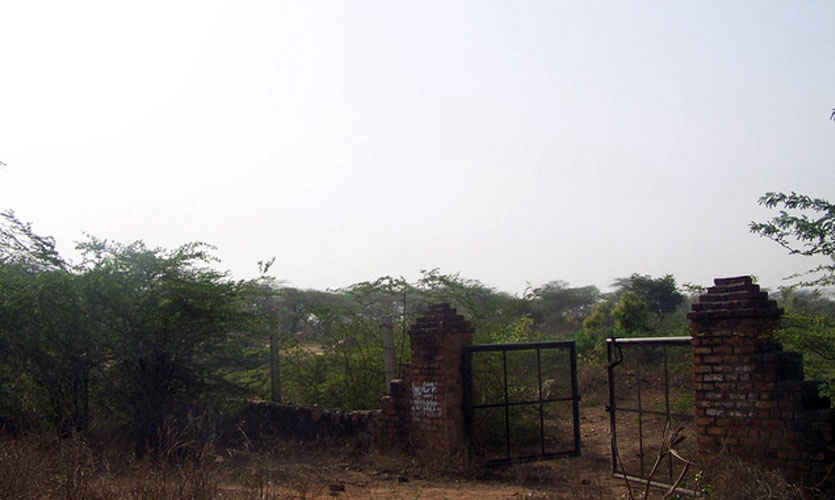
The Route
Asola Bhatti sanctuary is basically the southern ridge of Delhi between Tughlaqabad and Faridabad. The stray animals often seen on the footpaths near Tughlaqabad Fort are actually the inhabitants of this jungle. Its entry is near Dr. Karni Singh Shooting Range which is on the Tughlaqabad-Surajkund Road.
The Terrain
Geographically, it is a part of the Aravalli Mountain Range. So it is somewhat arid and is also under pressure from encroachments. That is why a Conservation Education Centre (CEC) has been opened here to disseminate knowledge about the flora and fauna and their conservation. The terrain is rocky and it'll take around 20 - 25 kms of cycling to cover the whole area.
What Not To Miss
Peacocks can be easily spotted at this point. If you are lucky, you can spot them dancing in the rain. If you go deeper, you will spot tailor birds, prinias, bulbuls, kingfishers, barbets, babblers, owls, hornbills and many other species of birds. Many thick groves inside the jungle have been painstakingly cultivated and this is what makes Delhi one of the best cities for the bird watchers.
4. Okhla Barrage and Bird Sanctuary
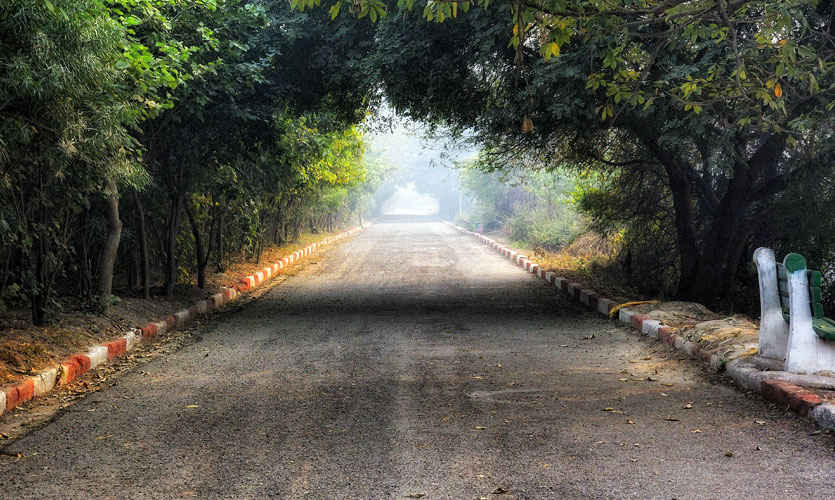
Picture Credits: Nadir Hashmi
The Route
Okhla Bird Sanctuary is a small but important forest area between Delhi and Noida. It is easily approachable from Sarita Vihar or the Jasola Apollo Metro Stations. You can cycle through the train amidst the jungle by the side of the river.
The Terrain
These are primarily wetlands around Yamuna. Most of the landscape is covered with reed forests. You will not find elevations here but the combination of the river and wetlands make it an interesting prospect, although the size of the area is shrinking rapidly due to indiscriminate constructions.
What Not To Miss
It is mainly a bird-watching hotspot. More than 300 species have been recorded here including many migratory ones. Watch out for rare species like Baikal Teal, White-rumped Vulture, Sarus Crane, Sociable Lapwing, Indian Skimmer, Lesser Adjutant and Finn’s Weaver, besides many more.
5. Mangar Bani
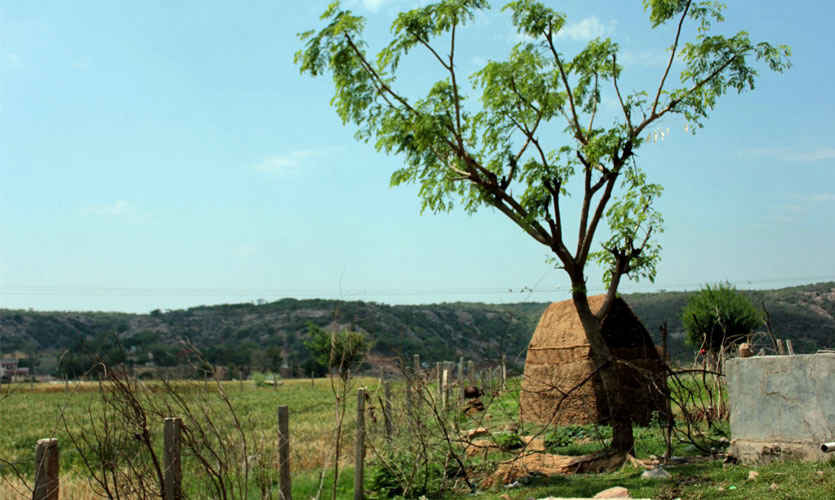
Picture Credits: Abaan Usmani
The Route
Mangar Bani is unique because unlike the ridge forests are located along the road connecting Gurgaon and Faridabad. While it connects to very populous cities, the jungle itself is pristine. You may try to locate Hanuman Mandir and reach the route connecting to the lake, puzzlingly called the 'Lost Lake'.
The Terrain
The terrain again is typical of the Aravali hills. So the place remains arid except for the monsoons. You may have to carry your bikes and hike at times on this trail. The possibility of punctures (damn) is pretty high too. But that is exactly what makes it challenging and exciting.
What Not To Miss
Mangar Bani is unique because it is one of the last remaining natural forests near Delhi. The ridge forests are pleasant but they were only planted recently. On the other hand, Mangar is ancient and venerable. It is also constantly under threat from encroaches. So, experience it before it disappears!
All these trails are interesting examples of urban jungles coexisting with metropolises. While the city skylines are visible from inside the jungles, it can easily take hours to completely cover these areas. Always carry some water and energy bars with you and also do not forget the binoculars for the birds! Happy biking!
Like
Bookmark
Share

